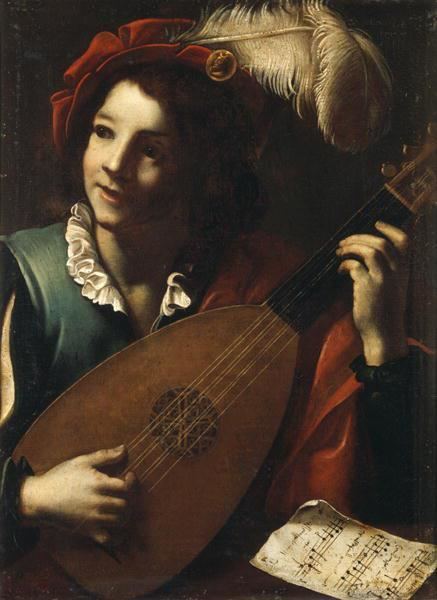 | ||
Classification Necked bowl lutesString instruments | ||
Chitarra Italiana ([kiˈtarra itaˈljaːna]; 'Italian guitar') is a lute-shaped plucked instrument with 4 or 5 single (sometimes double) strings, in a tuning similar to that of the guitar. It was common in Italy during the Renaissance Era. According to Renato Meucci, the designation of 'Italiana' followed the introduction to Italy of the flat-backed development of the instrument - referred to as chitarra alla spagnola (literally 'Spanish guitar'); to distinguish between the two versions. It is believed to have descended from Panduras, the Mediterranean lutes of Antiquity, and to be related to north African Quitra (or Kitra).
Its bass variety was known as Chitarrone. Musicologist Laurence Wright talked about the chitarrone in a letter to the Early Music journal (October 1976), saying it implied "large guitar", that it had a rounded back and was likely do be taken for a smaller lute, and that it was found from the 13th Century to the 18th Century, but was much more rare in the latter centuries. He also said that in latter years, when the mandola was popular, the chitarrone was "sometimes confused with the mandola".
